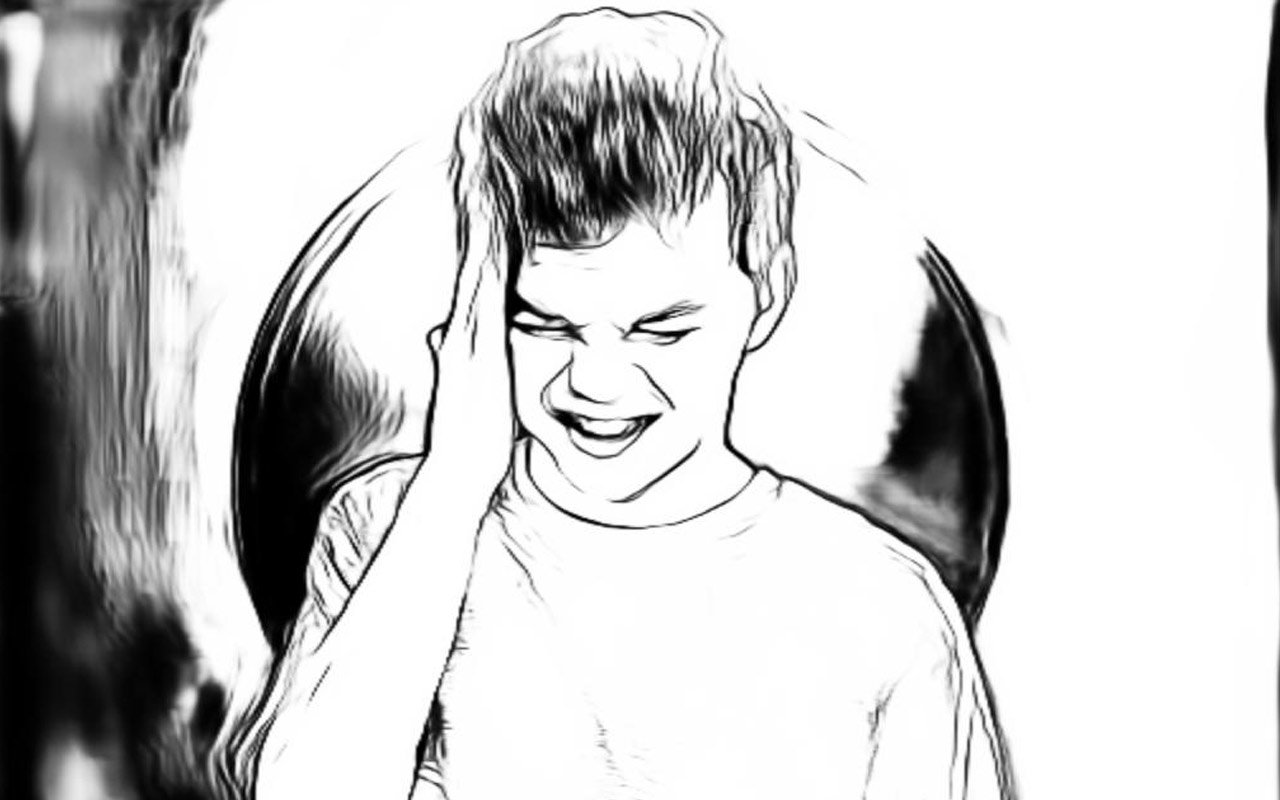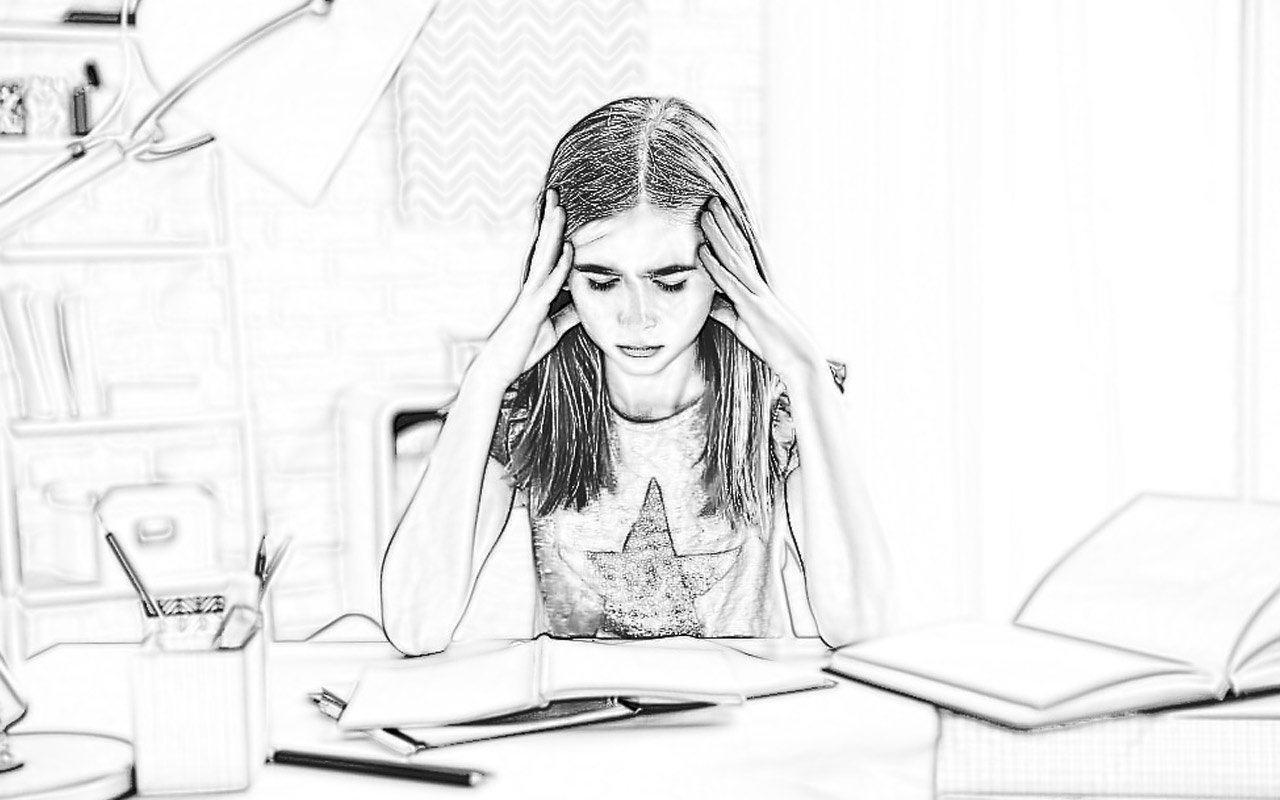Most headaches that children experience are not serious. There are many ways to categorize headaches. One way is to break them down into primary and secondary headaches.
Primary headaches do not occur due to underlying conditions. These include cluster headaches and migraines.
Migraines can be described as moderate-to-severe headaches. They last between two and 48 hours and are usually experienced two to four times per year.
Tension headaches can be triggered by stress, mental or emotional conflicts. Cluster headaches can last for weeks or months. They may also return every year.
Secondary headaches can be caused by brain structure problems or other health conditions. Primary headaches are more common than secondary headaches.
Headaches are one of the most common childhood health problems. General pediatricians may be able to treat headaches in children and teens aged 1 month and older, as 58.4% will experience them at some point.
Table of Contents
An Overview of Pediatric Headaches

Here are some key points to remember about headaches in children
- A headache is a pain in the head or neck that causes discomfort. Sometimes, headaches can occur once in a while. They may occur frequently.
- Primary headaches do not have a connection to any other health condition. These headaches are often caused by tight muscles, dilation of blood vessels, changes to nerve signals, or swelling in certain parts of the brain.
- Secondary headaches are the most common type of headache. These headaches can be caused by a brain problem or other health conditions.
- Your child might also experience headaches, nausea, or vomiting.
- To diagnose headaches, your child might need an MRI or CT scan.
- You may need to rest, take medication, manage stress, get more sleep, or avoid certain foods and drinks.
What is the prevalence of migraines among children?
Acute recurrent headaches, also known as migraine, are common in children aged 3 to 5, 4% to 11% in elementary school, and 8% up to 15% in high school.
Urgent versus Nonurgent Headaches
Numerous conditions can cause headaches at first. It is important to make a list of possible risk factors and symptoms to be aware of during your initial assessment.
Red flag risk factors include patients younger than six years old, those with a history of the neurocutaneous syndrome, immunodeficiency or known malignancy, and patients who are hypercoagulable.
Red flag signs include a new or rapidly worsening headache type, focal or sidelock headache, headache maximally at onset (thunderclap), infectious symptoms (eg fever, meningismus, or sinus pain), or pressure-dependent features such as positional headaches (eg: headache worse at night or early in the morning), headaches that are triggered by Valsalva maneuvers or cough, and persistent vomiting.
Not only are there focal neurologic symptoms, but also exam findings (e.g., vision changes, seizures, papilledema, and ataxia), that need to be evaluated immediately.
Etiologies that cannot be missed include mass lesions, infections (eg, meningitis/encephalitis, brain abscess), and vascular etiologies (eg, stroke, hemorrhage, aneurysm, arteriovenous malformation, cerebral venous sinus thrombosis).
All of these symptoms and exam findings should be prompted to have brain imaging done and/or lumbar puncture performed. Chronic headaches are a rare symptom.
Primary and secondary headaches
After urgent headache etiologies have been ruled out, it is time to identify primary and secondary headaches.
Primary headaches (such as tension-type and migraine) are not symptoms of underlying issues.
While a child might develop migraine-type headaches from obstructive sleeping apnea in childhood, primary headaches are only diagnosed after the possibility of secondary headache disorders has been excluded.
The history, physical exam, and any diagnostic testing needed (eg, sleep study or screening blood tests) can help to distinguish between primary headache and secondary headache.
Primary headaches
Primary headaches are diagnosed by identifying the classic symptoms of the headache. There are no diagnostic tests.
To aid investigators and clinicians, the International Headache Society created an International Classification of Headache Disorders.
An adult migraine diagnosis is used to diagnose episodic childhood migraine. An episodic headache is a migraine that causes 5 or more attacks over a period of 2 to 72 hours.
It must be unilateral or bilateral in location, pulsating quality, and moderate to severe pain. It should also be able to experience nausea, vomiting, photophobia, or phonophobia.
Experts believe that childhood migraine headaches are shorter and last for a longer time, often lasting between 30 and 60 minutes, and usually fit one or more of the categories.
The signs that indicate a migraine are present in childhood are also different from those in adult migraine.
These include fatigue, mood changes and stiffness in the neck, cranial autonomic signs, cutaneous allodynia, and cranial symptoms. They are not visual disturbances or dizziness.
Diagnoses of episodic tension-type headaches in childhood require 10 episodes or more lasting between 30 minutes and 7 days.
It must be bilateral in location, pressing or tightening (non-pulsating), mild to moderate intensity, and not aggravated by routine exercise.
It cannot have nausea or vomiting and it must not be more than one photophobia or Phonophobia.
It is possible for children and teens to present with migraines and tension-type headaches. This makes it difficult to find separate treatments. It is not clear if they are biologically distinct entities.
While most treatments are focused on migraine management, the overall approach should address lifestyle modifications, a rescue plan, and a preventative strategy.
What are the causes of pediatric headaches?
It isn’t known exactly what causes headaches. There may be several causes.
- Tight muscles in the neck or head
- Brain blood vessels that dilate or widen in the brain
- Brain changes in electrical or chemical signaling
- Changes in communication between parts of the nervous system that transmit information about pain
- Brain tumors or malformations
- Poor quality sleep or lack of sleep
Symptoms of Pediatric Headache
The type of headache that your child has will affect the symptoms.
Migraines
Migraines can be characterized by:
- All over pain, or just one or both of the sides of your head
- You may feel a throbbing sensation or pound in your chest.
- Sensitivity to sound or light
- Nausea and vomiting
- Abdominal discomfort
- Sweating
Your child may become quiet or pale. Auras are signs that your child is suffering from a migraine. They may experience flashing lights, vision changes, or strange smells.
Tension Headaches
These symptoms may be present if your child experiences tension headaches.
- The pain of a headache is not sudden.
- Both sides of the head usually hurt.
- The sensation of pain is dull, or it feels like there’s a band around your head.
- The back of the neck or the top of the head can be affected by pain.
- The pain is moderate to moderate but not severe.
- It is possible that your child may have changed their sleeping habits.
Tension headaches in children are not usually associated with nausea, vomiting, or light-sensitive.
Cluster Headaches
Common symptoms of cluster headaches are:
- Severe pain in one side of the skull, often behind one eye
- If your child has an affected eye, you may notice a droopy or small pupil as well as redness and swelling.
- Congestion or runny nose
- Swollen forehead
Pediatric headache: red flags

The following symptoms may indicate a more serious cause of your children headaches:
- Headaches in children often start early in the morning.
- As the headache syndrome progresses, your child will start to experience personality changes.
- Your child is still very young.
- Your child wakes up from a headache.
- Your child will describe the sudden onset of pain as the “worst headache ever”.
- Your child is experiencing a headache that is more frequent or severe.
- Your child’s vision has changed.
- Your child is experiencing weakness in their arms and legs or balance problems.
- Your child develops seizures or epilepsy.
- Strain, such as a cough and a sneeze, can make your child’s pain worse.
- Recurrent vomiting episodes without nausea are a sign of a stomach virus.
These red flags should be reported to your pediatrician immediately if your child shows any of them.
Diagnosis of Headaches in Children
A careful history, physical exam, and diagnostic tests are all necessary to diagnose a headache. The doctor will conduct a comprehensive medical history and take the family’s complete medical history.
The doctor will need to know the following: when headaches occur, where they are located, how it feels, and how long it has been.
No further testing may be required if the history of migraines or tension-type headaches is consistent and the neurological exam results are normal. Other cases may require additional testing by the pediatrician, such as:
Blood tests
The purpose of a blood test is to determine if there are any deficiencies in iron or ferritin. Also, the function of the thyroid gland, which is located at the base and makes hormones for different bodily functions, will be checked.
To determine the overall health of your child, your pediatrician will order a complete blood count.
Brain scans
A magnetic resonance imaging (MRI), or computed tomography scan (CT) can take images of the brain. The doctor will be able to take a closer look at the brain of your child and identify any potential problems.
Polysomnogram
This test is typically done in a sleep laboratory. This involves recording your breathing and muscle movements.
If your child has a suspected sleep disorder such as sleep apnea (in which breathing stops or starts repeatedly), a polysomnogram will be performed.
Your child’s doctor may want to examine your child further, but that does not necessarily mean they are looking for brain cancer or other serious conditions.
They are usually trying to find answers. During this time, try to make your child as calm and relaxed as possible.
Your child can be helped by over-the-counter (OTC), pain relievers such as Advil (ibuprofen), Tylenol, Advil (acetaminophen), or Aleve (naproxen).
Children’s Advil is a common choice because it works well for most children. Anti-nausea medication can be used if nausea is present.
Triptans are migraine medications that can be used to treat migraines in children. They are brain chemical that reduces pain signaling in your brain. They can be prescribed and used only if OTC medication fails to work.
Secondary headaches are caused by underlying conditions and treatment depends on the particular issue.
How to Prevent Pediatric Headaches
While not all headaches can always be avoided, there are lifestyle changes that can help you manage the headaches of your child. You can make lifestyle changes that will help your child.
Sleep: A lack of sleep can cause headaches. Children usually need between seven and nine hours of sleep each night.
Watch out for possible connections between certain foods like pickles, chocolate, cheese, nuts, and processed meats. You could restrict or eliminate pickles from your child’s diet if they get headaches after eating pickles.
Behavioral Therapy: If your child is suffering from headaches due to stress, you can help him or her by teaching them meditation, yoga, and other relaxation techniques. Your child’s headaches can be prevented by managing their stress.
Preventive medication may be recommended if your child suffers from migraines. These medications could include.
Topamax, topiramate: This medication was initially used to treat epilepsy. However, it can also be used for migraine prevention.
Beta-blockers: beta-blockers reduce the blood vessels’ width that may contribute to migraine development. Tenormin (atenolol), Kerlone (betaxolol), are two examples.
Arlevert, (cinnarizine): This medication is an antihistamine as well as a calcium channel blocker. This medication prevents blood vessels walls from contracting and can help prevent migraines.
Elavil: Amitriptyline is commonly used to treat depression. It works by increasing brain levels of serotonin. A higher level of serotonin can alter the way certain nerves receive pain signals from the brain, which leads to less migraine pain.

